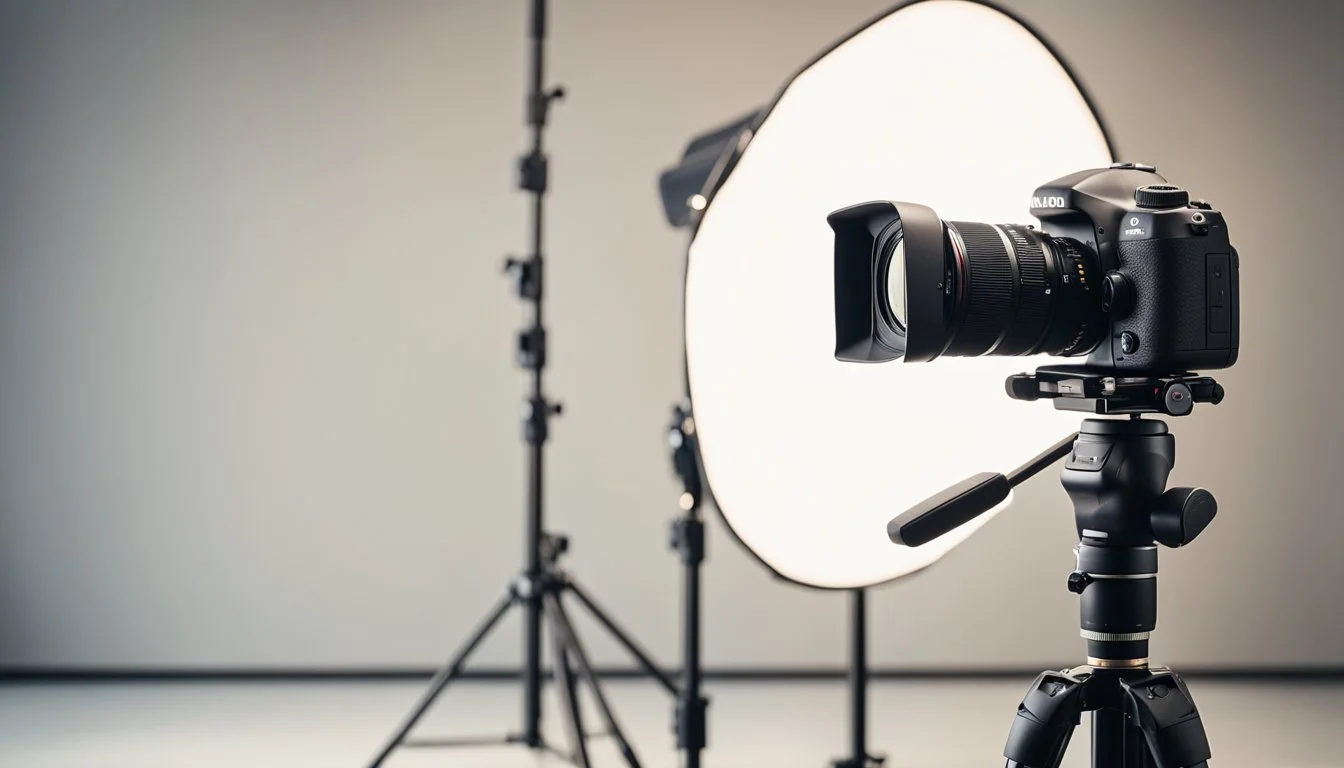The Art of the Documentary Portrait
Mastering Person-Centric Filmmaking
Capturing a person's essence on film through documentary portraiture is a delicate blend of art and storytelling. Combining technical skill with emotional depth, a successful documentary portrait transcends mere physical representation to reveal the character and story of the subject. It is through this profound connection that the photographer is able to capture the true essence of an individual, presenting an authentic narrative that resonates with viewers.
Documentary portraiture requires not only a keen eye for detail but also an ability to connect deeply with the subject. The photographer must navigate and capture the subtle nuances of expressions, emotions, and stories, creating a complex and intimate portrayal. By focusing on these elements, the portraits become powerful visual narratives that engage and evoke empathy in the audience.
In the realm of documentary photography, the importance of authenticity and respect for the subject cannot be overstated. The most compelling portraits reflect a mutual trust between the photographer and the subject, allowing for an honest story to unfold. This transparent portrayal invites viewers into the very soul of the person, offering a glimpse into their lived experiences and unique perspective on life.
History of Documentary Portraiture
Documentary portraiture has its roots in the early days of photography. Pioneers like Mathew Brady captured stark images of Civil War soldiers, revealing the human side of the conflict.
In the late 19th and early 20th centuries, photographers such as August Sander aimed to document individuals from various societal backgrounds. His work "Bricklayer" from 1928 remains one of the most iconic images, highlighting the determination and grit of post-war society.
During the Great Depression, the Farm Security Administration (FSA) commissioned photographers like Dorothea Lange and Walker Evans. Their portraits of displaced farmers and impoverished families evoked empathy and brought attention to social issues.
The evolution of photography techniques in the mid-20th century led to the development of more candid and snapshot-style portraits. Alfred Stieglitz and his piece "The Steerage" from 1907 marked a significant shift toward capturing the essence of real-life moments.
In the contemporary era, documentary portraiture continues to evolve with advances in technology. Photographers now employ digital tools, but the core aim remains the same: to present an unfiltered, truthful representation of the subject.
Defining the Documentary Portrait
A documentary portrait focuses on capturing individuals in their natural environments. Unlike traditional posed portraits, these photographs emphasize authenticity and connection.
Key Characteristics:
Candid moments: Portraits are unposed, highlighting genuine expressions and interactions.
Contextual backgrounds: The environment often plays a critical role in telling the subject's story.
Emotional depth: Captures the subject's personality and essence.
Techniques Used
Documentary portraits require different approaches and skills:
Patience: Waiting for the right moment to capture authentic expressions.
Observation: Keen awareness of the subject's surroundings and behaviors.
Interaction: Building rapport to make subjects feel comfortable.
Examples in Photography
Photographers like William Eggleston have contributed significantly to this genre. His work in color photography added a new dimension to documentary portraits by focusing on everyday scenes.
Common Settings
Daily routines: Morning preparations, family gatherings, and work environments.
Outdoor activities: Fun family outings, playtime, and community events.
Personal spaces: Homes, workstations, and places of personal importance.
In summary, the documentary portrait is a unique approach to photography. It captures the true essence of individuals through candid moments, contextual backgrounds, and emotional depth.
Essential Equipment
Documentary portrait photography thrives on the right combination of cameras, lenses, lighting, accessories, and sound recording devices. This section highlights key equipment choices crucial to capturing the true essence of a person on film.
Cameras and Lenses
When selecting a camera, full-frame mirrorless and DSLR cameras are preferred for their superior image quality and versatility. Canon EOS R5, Sony A7 IV, and Nikon Z7 II are popular choices.
Lenses play a pivotal role in defining the image. Prime lenses like the Canon RF 50mm f/1.2L and Sigma 35mm f/1.4 offer sharpness and low light performance. Zoom lenses like the Canon 24-70mm f/2.8L provide flexibility, making them useful for dynamic shooting environments.
Lighting and Accessories
Proper lighting is essential in creating depth and highlighting features. Continuous lighting setups, such as LED panels like the Aputure Light Storm series, are preferable for controlled environments. Softboxes and diffusers help soften the light, reducing harsh shadows.
Portable options include speedlights like the Godox V1 for quick adjustments and reflectors for bouncing natural light. Tripods and light stands are necessary for stability, particularly during prolonged shooting sessions.
Sound Recording Devices
For capturing audio, external microphones are indispensable. Shotgun mics such as the Rode NTG3 are effective at isolating the subject’s voice, while lavaliere mics like the Sennheiser EW 112P G4 are discreet and ideal for mobility.
Portable audio recorders like the Zoom H5 offer high-quality recordings and are suitable for various settings. Windshields and pop filters are additional accessories that help minimize unwanted ambient noise and improve clarity.
Each piece of equipment contributes significantly to the quality and effectiveness of documentary portrait photography. Proper selection and usage of these tools ensure that the essence of the subject is captured authentically and with high fidelity.
Preparation and Research
Thorough preparation and research are crucial for effectively capturing a person's essence in a documentary portrait. This involves a deep understanding of the subject, developing a clear concept, and setting specific objectives.
Understanding the Subject
A comprehensive understanding of the subject forms the foundation of any successful documentary portrait. This involves spending time with the subject, observing their mannerisms, and learning about their life experiences.
Interviews or casual conversations can be invaluable for gathering insights into their personality, values, and history. It's also helpful to research any relevant cultural or historical contexts that may shape their story.
Taking notes during these interactions ensures that no detail is overlooked, and helps in forming a genuine connection, which is vital for authentic portrayal.
Developing a Concept
Once the subject is well understood, developing a concept for the portrait becomes the next step. This concept should reflect the subject’s unique characteristics and the desired narrative.
Brainstorming sessions can help in exploring different angles and ideas. Creating a mood board or collecting inspirational images can further clarify the visual and thematic direction.
The concept should not only highlight the subject's essence but also resonate with the intended audience. This requires a balance between artistic vision and the subject's real-life story.
Setting Objectives
Clear objectives guide the entire process of creating a documentary portrait. These objectives outline what the portrait aims to achieve and the key messages to be conveyed.
Setting both short-term and long-term goals is beneficial. Short-term objectives might involve the technical aspects like shooting angles, lighting setups, and shot lists. Long-term objectives could focus on the narrative arc and the emotional impact.
Objectives ensure that the shoot is organized and systematic, helping the team stay on track and deliver a coherent final product.
Techniques in Filming Portraits
Capturing the essence of a person on film involves careful attention to framing, composition, interviewing techniques, and directing non-actors. Each of these aspects is crucial in bringing out the subject's true character and telling a compelling story through their portrait.
Framing and Composition
Framing and composition are fundamental in drawing the viewer's eye to the subject. Use the rule of thirds to create balance and interest. Position the subject off-center to enrich the visual narrative.
Consider background elements that complement or contrast with the subject, enhancing the overall emotional impact. Use leading lines to guide the viewer's gaze toward the subject.
Lighting is paramount; natural light can add a soft, authentic feel, while controlled studio lighting helps highlight specific features.
Interviewing the Subject
Effective interviewing starts with creating a comfortable environment. Begin with casual conversation to help the subject relax. Ask open-ended questions to encourage detailed responses and reveal personal stories.
Listen actively and maintain eye contact to foster trust. This helps capture genuine expressions and emotions. Be patient, allowing natural pauses and silences to add depth to the narrative.
Record the interview audio separately to ensure clarity and integrate it seamlessly with visual footage during editing.
Directing Non-actors
Directing non-actors requires a delicate touch. Provide clear, simple instructions and avoid jargon that may confuse or overwhelm. Encourage the subject to be themselves, emphasizing natural behavior over scripted actions.
Use positive reinforcement to build confidence and ease tension. Reassure the subject that mistakes are part of the process and can be corrected in editing.
Create a relaxed atmosphere to help the subject feel comfortable on camera. Sometimes, capturing candid moments can convey the most authentic portrait.
Ethical Considerations
In documentary portraits, filmmakers encounter critical ethical challenges. Gaining informed consent and accurate representation are imperative to maintain trust and fidelity to the subject's story.
Subject Anonymity and Consent
Consent is foundational in documentary filmmaking. Filmmakers must ensure that subjects understand the scope, purpose, and potential reach of the project. Informed consent involves clear communication about these aspects, allowing subjects to make a well-informed decision about their participation.
Anonymity may be necessary to protect the subject’s identity, especially in sensitive situations. This involves masking identifiable features and altering voices if needed. It's essential to respect privacy and avoid exposing subjects to harm or undue attention. Ethical filmmakers balance storytelling needs with the subject's right to safety and dignity.
Editing and Representation Integrity
Editing shapes the narrative but must not distort reality. Fair and accurate portrayal ensures that the subject's true essence is captured without manipulation. Filmmakers should avoid selective editing that misrepresents facts or enhances drama artificially.
Portrayal integrity demands respect for context and perspective. Contextual accuracy includes maintaining the original context of quotes and actions. Transparency during the editing process promotes trust and credibility, reducing the risk of misinterpretation by viewers. This involves ethical decision-making to represent subjects honestly while creating a compelling narrative.
Narrative Structure in Documentary
The narrative structure of a documentary plays a crucial role in engaging the audience. A well-structured story ensures that viewers remain interested and emotionally connected to the subject.
Three-Act Structure: The three-act structure, borrowed from traditional storytelling, is commonly used. This method divides the story into three parts:
Act 1: Introduction - Establishes setting, characters, and central conflict.
Act 2: Development - Explores conflict and deepens the narrative.
Act 3: Resolution - Concludes the story and provides closure.
Key Plot Points:
Opening: Introduces the documentary’s main theme.
Inciting Incident: Presents the main conflict or problem.
First Act Break: Marking a major turning point.
Midpoint: Dramatic development that shifts the story’s direction.
Second Act Break: Leads into the climax.
Resolution: Concludes the story.
This structured approach helps maintain a logical flow and keeps the audience engaged.
Conflict and Resolution: Conflict drives the narrative and keeps viewers hooked. Resolution provides satisfaction, reinforcing the film’s message. By careful placement of conflict and resolution, a documentary's emotional impact is maximized.
Character Development: Characters in documentaries must be well-developed. Through interviews, archival footage, and observational shots, filmmakers reveal the essence of their subjects. This humanizes the story, making it relatable.
Visual and Aural Elements: Using visual techniques and sound design enhances the narrative. Careful selection of imagery and sound effects adds depth and supports the documentary’s message.
Incorporating these elements creates a compelling narrative structure that captures the audience’s attention and effectively conveys the documentary’s theme.
Post-Production Workflow
The process of post-production is crucial in shaping the final documentary portrait, ensuring the footage is polished, cohesive, and emotionally engaging. This involves meticulous editing, precise color correction, and careful audio mixing to create a seamless and compelling narrative.
Editing Techniques
Editing is the backbone of post-production, transforming raw footage into a coherent story. Editors often begin by organizing clips and selecting the best shots. They use non-linear editing software like Adobe Premiere, Final Cut Pro, or Avid Media Composer.
Cutting on action and match cuts are techniques that can maintain continuity and engage viewers. Incorporating B-roll footage enhances the narrative, providing visual variety and context. Timely transitions and sequencing of scenes are crucial for pacing and emotional impact.
Color Correction and Grading
Color correction ensures visual consistency across all scenes, while grading establishes the documentary's mood and tone. Using tools like DaVinci Resolve or Adobe SpeedGrade, colorists adjust exposure, contrast, and saturation.
They may create LUTs (Look-Up Tables) to apply specific color styles consistently. Proper color grading can evoke specific emotional responses, enhancing the storytelling. Emphasis is also placed on achieving skin tone accuracy, and balancing shadows and highlights to ensure the final product is visually polished.
Audio Mixing and Mastering
Clear and dynamic sound is essential in documentaries. Audio mixing involves balancing dialogue, music, and sound effects to create an immersive experience. Tools like Pro Tools, Audition, or Logic Pro are commonly used.
The equalization (EQ) process fine-tunes frequencies, while compression manages volume levels. Adding subtle ambient sound can enhance realism. Mastering ensures the final audio track meets industry standards and is ready for various distribution formats, providing a professional and polished audio experience.
Distribution and Exhibition
Distribution and exhibition of documentary portraits require strategic planning. These films often target niche audiences interested in both photography and human stories.
Film festivals provide an ideal platform. Some top festivals include:
Sundance Film Festival
Cannes Film Festival
Toronto International Film Festival
These festivals attract industry professionals and offer opportunities for networking and media exposure.
Online Streaming Platforms:
Netflix
Amazon Prime
Hulu
These platforms have made it easier to reach a global audience. Filmmakers should consider these venues for broader distribution.
Art Galleries and Museums:
Art institutions are special venues for documentary portraits. Often, they offer curated experiences that align well with the storytelling nature of these films.
Broadcasting Networks:
Networks like PBS and BBC frequently air documentaries. Collaborations with these broadcasters can also offer credibility and reach.
Social Media Campaigns:
Social media can effectively create buzz. Platforms like Instagram and YouTube allow for short teasers, behind-the-scenes content, and interactive engagement with audiences.
Example Table of Distribution Channels:
Channel Type Special Features Film Festivals Event Networking, Media Coverage Online Streaming Digital Global Reach Art Galleries & Museums Physical Curated Experiences Broadcasting Networks Television/Online Credibility, Larger Audience Social Media Platforms Digital/Social Engagement, Viral Potential
By leveraging these various channels, filmmakers can effectively distribute and exhibit their work, ensuring it reaches the intended audience.
Impact and Reception
Documentary portraits hold a unique place within visual storytelling. They impact viewers and critics alike by conveying profound insights into the subject's life. Their reception varies widely, reflecting diverse interpretations and emotional responses.
Critical Analysis
Critics often praise documentary portraiture for its authenticity and emotional depth. The genre's ability to convey real stories through unposed, candid moments provides a stark contrast to more stylized forms of photography.
Art critics emphasize how the use of lighting, composition, and timing can elevate the art form. They also discuss the ethical implications, scrutinizing how the photographer's perspective might influence the representation of the subject.
The blend of factual representation with artistic expression continues to be a focal point in critical discussions.
Audience Engagement
Documentary portraits resonate deeply with audiences, fostering a connection with the subject that transcends the photograph. Viewers often report feeling a sense of empathy and understanding when engaging with such images.
Interactive exhibitions and multimedia presentations have further enhanced audience engagement. These formats allow viewers to explore the context and background of each portrait, creating a more immersive experience.
With the advent of social media, documentary portraiture has reached a broader audience, encouraging dialogue and raising awareness about various social issues.
Case Studies of Renowned Documentary Portraits
The Blue Flower Of Novalis documents the life of Marcelo, a Brazilian man with a unique combination of traits. He presents an irredeemably honest and libertine character who claims to be the reincarnation of a renowned German poet.
Sally Mann and Her Lens
Sally Mann intricately captures her own family, showcasing an intimate look into their lives. Her work addresses themes of family, mortality, and the passage of time.
Robert Frank's Heartfelt Story
Robert Frank's portraiture often dives into personal loss. His film reveals the tragedies that befell his family, including the loss of his son. This personal lens aids in portraying a deep and empathetic view of human experience.
Garry Winogrand's Vision
Garry Winogrand explored America's social landscape in the late 1950s and early '60s. His portraits highlight mundane yet significant moments, providing an authentic glimpse into American life.
Lee Friedlander is celebrated for his street photography, capturing complex and often ironic scenes of the urban environment.
Sebastião Salgado
Sebastião Salgado is acclaimed for his documentary photography focused on social issues and environmental concerns. His portraits of migrant workers and impoverished communities emphasize global disparities.
Roger Ballen is known for blending documentary photography with elements of fiction. His psychodramas blur the lines between reality and fantasy, creating compelling visual narratives.
These case studies underscore the diverse approaches in documentary portraiture, each bringing out unique aspects of their subjects through the lens.






